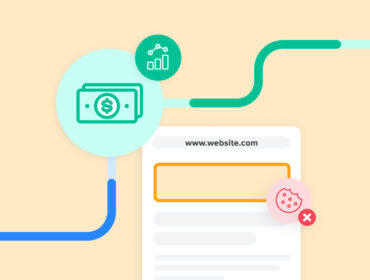IAB’s Identity solutions townhall: A recap
Identity is undergoing an identity crisis.
With third-party cookies are on their way out, publishers and advertisers are left to reinvent their strategies for targeting, addressability, and personalization.
The good news is that many marketplace solutions have already cropped up to address these issues, and Google’s recent announcement to delay the deprecation of the third-party cookie has bought the industry some time to sort things out. The bad news is that there’s still much confusion around how to choose the best solution for your business and customers – and for the longevity of the marketing ecosystem as a whole.

To help, the Interactive Advertising Bureau (IAB) hosted a virtual event about identity, bringing together leaders from LiveIntent, Acxiom, and Verizon Media to discuss this change and propose how we can work together as an industry to create a more privacy-safe, addressable future.
The pivot to first-party data
The key to identity lies in first-party data. Since it’s collected directly from the user, it’s more conducive to transparent, privacy-safe interactions.
“More than ever before, first-party data is top of mind for everyone,” said Mano Pillai, chief product officer at LiveIntent. “If you’re a marketer or publisher, you should be asking, ‘How do I build my first-party data assets?'”
One of the best ways to do that is through email – a logged-in, measurable, and targetable channel.
“Newsletter subscriptions, for example, has been a way for large brands and publishers to create a first-party relationship and [drive] engagement and re-engagement with consumers,” Pillai said. “From a publisher standpoint, email subscription programs let you not only extend that engagement but monetize the newsletter through programmatic advertising or native ads that are contextually relevant.”
Gauging different industry solutions
Businesses should be vigilant when searching for the right solution to their addressability problem.
“Ask the tough questions,” said Varun Bhagwan, VP of product management and engineering of ad data products at Verizon Media said. “Do you have any direct customer relationships? How sustainable are they? How are you collecting the source data? How are you thinking about governance if you have thousands of companies all using some ID?”
LiveIntent’s nonID, for example, is an encrypted ID that helps companies connect their first-party email addresses to the larger digital ecosystem. Publishers can tap into a scalable, organic data set of billions of emails that are always being authenticated through daily through organic connections.
The Trade Desk and IAB have also been working on Unified ID 2.0 – an open-source framework of encrypted email addresses that don’t rely on third-party cookies.
“For solutions that exist today, you have an opportunity as a marketer or publisher to integrate and adapt and see the value – learn, test, leverage,” said Bhagwan. “If I were in their shoes, that’s what I would be doing.”
Building a more secure and addressable future
Preparing for the death of the cookie isn’t just about slapping a bandaid on the problem and hoping it goes away. It’s about proactively taking steps now to build a better, more privacy-safe future that ensures we don’t end up in this same spot again.
“If we’re, as an industry, always approaching changes to identifiers as a cat-and-mouse thing, I think we will end up at the same place in five years,” Cone said. “Let’s lean in and say, ‘How can we retool the way that the supply chain works, to be more transparent, to be more controllable?’ I think that’s the best bet that we’ve got.”
The solutions are out there. Businesses need to be researching, testing, and learning about the best platforms and partners for their needs. And they need to be focusing on the power of first-party data and one-to-one customer relationships for driving more personalized experiences across the web. Otherwise, they’ll continue to be vulnerable to data-grabbing platforms and an ever-changing marketing landscape.
As Pillai said, “We’re talking about brands and publishers owning their destinies. And the future of identity will be built off first-party data regardless of what happens in the ecosystem.”


